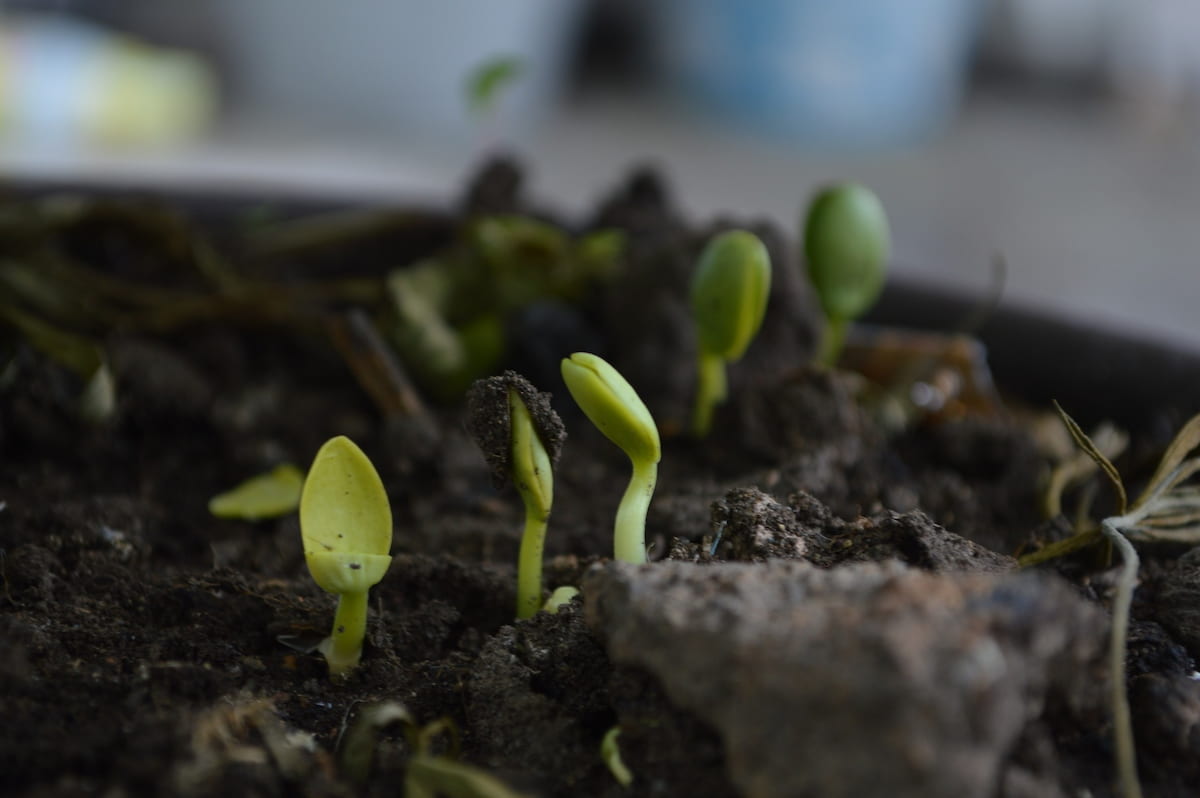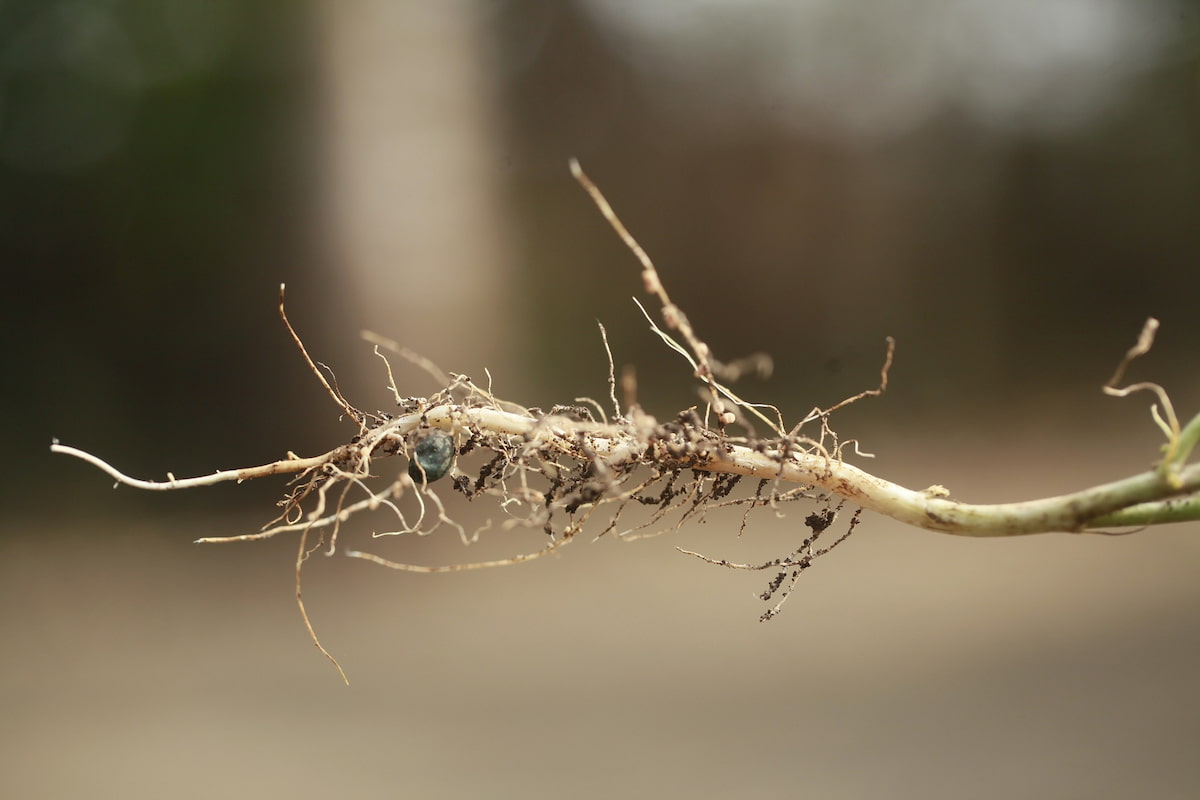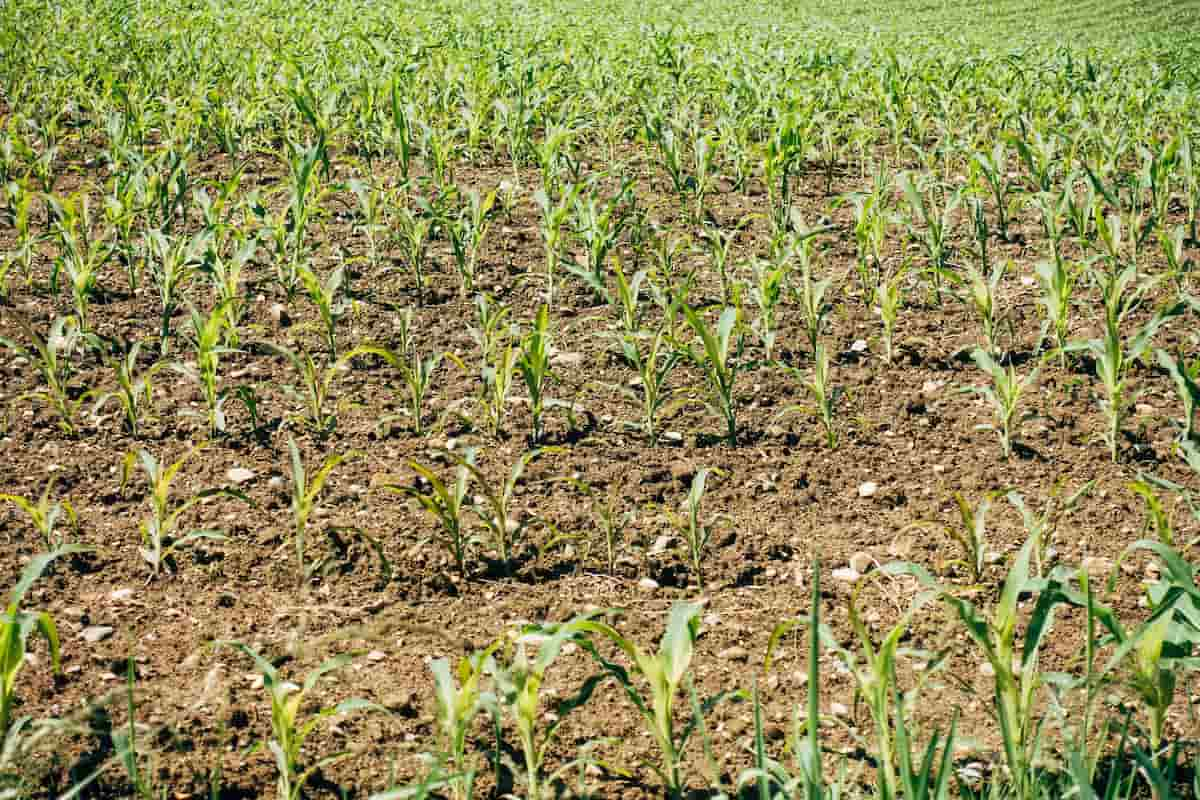We all know that plants need soil to survive. But we may not know that soil can also be a breeding ground for various soil-borne pathogens. If left untreated, these pathogens can damage or even kill our plants. Pathogens are tiny creatures that can cause serious illness. Insects, animals, or people can carry pathogens.

Some pathogens are harmful to humans and plants, while others are harmless. Pathogens can be found in soil, but the most common types include bacteria, fungi, and viruses. Some pathogen species can be harmful to plants as well. Soil-borne pathogens are especially dangerous because they can easily move from one place to another through the air or water.
Soil-borne diseases are caused by bacteria, fungi, or viruses and can affect many plants. Some soil-borne diseases can be serious, killing young plants or causing foliage to turn yellow, brown, or red. Others may only cause mild symptoms such as stunted growth or reduced fruit production. Soil-borne diseases can be a problem in urban and rural areas and can often spread through contact with infected plant material or water.
Soil borne diseases and how to treat them effectively
Types of soil-borne pathogens
Fungi
Fungi play an essential role in the health of plants and soil, as they can break down organic matter and release nutrients into the soil. In addition, fungi can produce toxins that harm plants or other organisms. Soil-borne fungi can be harmful if not controlled properly, so it’s important to learn about them and how to control them. Fungal infections are the most common type of soil-borne disease in plants.
Fungi-like molds thrive in moist environments and can cause damage to plant tissues. Common fungal infections that affect plants include powdery mildew, rust, and black spot. Rust is a fungus that causes patches of yellow or brown lesions on leaves. Black spot is a fungus that causes wilted foliage and dead flowers. Powdery mildew is a fungus that causes white patches on leaves. Each of these fungal infections requires different treatment methods to cure them.
Root rot is a fungal disease affecting several plants, including garden vegetables and fruit trees. The fungus attacks the roots of the plant. As the fungus proliferates, the roots become gummy and pale in color, and the tree may eventually die. You can do a few things to protect your plants from root rot. One is to ensure that the soil around your plants is well-drained so excess water doesn’t accumulate on the roots.
Stem rot is a fungal disease that can affect plants in both dry and wet soils. Symptoms include wilting, yellowing of the leaves, and stunted growth. The fungus that causes stem rot is most common on vegetables but can also occur on fruit trees and flowers. To prevent or treat stem rot, you need to know which fungus is causing the problem and how to treat it. Numerous fungi can cause crown rot, a soil-borne disease.
Crown rot occurs when the fungus attacks the plant’s crown (the top). Crown rot symptoms typically develop due to wet conditions and high humidity. The leaves may turn brown and die, and the stem may become twisted and brittle. Crown rot is particularly common in plants growing in wet soils or near water sources. Several soil-borne fungal pathogens can cause wilting. These fungi produce enzymes that break down plant cell walls, leading to wilting.
A common sign of fungal wilting is reduced growth or stunted plants. Proper fungicide use and irrigation can help prevent or treat these diseases. Damping off is a serious fungal disease that can kill crop plants. The fungus causes it, affecting many plants, including Potatoes, Tomatoes, Apples, Pears, and Grapes. Damping off is most common in warm weather climates. The fungus attacks the plant’s roots and causes them to rot. Once the roots are damaged, the plant can’t send water to its leaves to prepare food. As a result, the leaves droop and die.
Bacteria
There are over 1,000 types of bacteria that can cause disease. Bacteria can be found in soil, water, and air. Some bacteria can cause diseases in people, while others can cause diseases in animals. Bacteria are single-celled microorganisms that can cause a wide range of illnesses. Bacteria can also form spores that can survive in the soil for many years and spread harmful bacteria to plants or other animals when they contact the soil.
Bacterial infections are also common soil-borne diseases in plants. Bacteria thrive in moist environments and can cause damage to plant tissues by attacking cells organically or causing water loss from the plant. Common bacterial infections that affect plants include blight, leaf blight, and anthracnose. Blight is a bacterial infection that causes thick green spots on leaves. Leaf blight is a bacterial infection that causes leaf lesions, including brown spots and crinkles.
In case you missed it: How to Grow and Care for Poinsettia Indoors: Propagation, Planting, and Management

Virus
Several viruses can infect plants, including the common mosaic virus. Viruses typically attack plant cells and cause them to malfunction, which can lead to disease. Several viruses can cause plant diseases, including the potato and tomato spotted wilt virus.
Nematodes
There are many types of soil-borne pathogens, and each one can cause various diseases in plants and animals. Nematodes are a type of soil-borne pathogen that can cause damage to plants as well as people. Nematodes vary in size, shape, and life cycle, but all of them can infect plants and animals. Nematodes feed on plant roots or other organisms. When nematodes parasitize plant cells, they release toxins that can damage the plant’s tissues.
How do soil-borne pathogens spread?
Soil-borne diseases in plants are caused by bacteria, viruses, or fungi that grow and spread in the soil. The organisms can attack or spread to other plants through their roots. Once an infected plant, the disease can affect its growth and development, usually causing leaves to turn yellow, wilt, and die. There are many soil-borne diseases, but they all share some common traits.
For example, soil-borne diseases often cause leaves to turn yellow or brown and develop spots or lesions. They also tend to spread rapidly throughout a plant’s root system. Some soil-borne bacteria and viruses can easily pass from one plant root to another through physical contact or water droplets that splash around when plants interact. Other pathogens can travel long distances through the air as pollen or spores. Once a pathogen has infected a plant, it can multiply quickly inside its tissues.
Another way that soil-borne pathogens can spread is through contact with contaminated water runoff. When rain hits contaminated soils, it runoff into streams and rivers, contaminating plants and other aquatic creatures. Soil-borne pathogens also get transferred from infected plants to other plants via direct contact. Pathogens that cause plant diseases often thrive in moist environments so that they may survive outside of an infected plant in favorable conditions.
In case you missed it: Indoor Plants That Can Be Used as Christmas Tree Alternatives

Prevention of soil-borne diseases
To prevent soil-borne diseases in your home, you can take a few easy steps to help. First, keep your compost pile well-stocked with fresh organic matter. This will help to break down contaminants and create a healthy soil environment. Avoid contact with sick people and pets, as this can increase your chances of getting sick. Finally, watch for signs of illness in your garden or yard. Preventing soil-borne diseases is important not only because they can be unpleasant and costly but also because they can spread quickly through a community.
Make sure your pets are properly vaccinated against common soil-borne diseases. The best way to control soil-borne diseases is to prevent them from occurring in the first place. Good agricultural sanitation practices, such as good drainage, manure, and soil amendments, help keep the soil at a healthy pH level and reduce the chances of fungal growth. Good crop rotation helps break down organic matter, inhibiting fungal growth.
Fungicides may also be used to control specific soil-borne diseases. Keep your garden clean. Remove all leaves, debris, and weeds from the ground before planting seeds or starting new plants. Mulch around plants to keep the ground moist and help prevent weed growth. Avoid over-application of fertilizer or pesticides. Fertilize only when the soil is dry, and test the soil first to be sure that the desired nutrients are being absorbed. Pesticides can damage your plants and contaminate the soil with harmful chemicals.
In case you missed it: Tips for Growing Impatiens in Pots: A Guide to Propagation, Planting, and Harvesting

Controlling soil-borne diseases
Soil-borne diseases are a major problem in agriculture and horticulture. Many different organisms, including bacteria and fungi, can cause them. Strains of viruses are found in the environment and can infect plants through contact with infected water or dust particles. Wear gloves when handling plants or working with soils, avoid close contact with people who are sick, and keep your home clean by washing your hands regularly and cleaning up spills.
When plants are growing in soil, they can become infected with a variety of soil-borne diseases. Soil-borne diseases can destroy plants and even spread to other plants through contact or water uptake. There are many ways to treat soil-borne diseases in plants, but the best way to treat them depends on the specific disease. There are three main ways that soil-borne pathogens can attack plants: by penetrating the plant’s epidermis, entering through the roots into the plant’s vascular system, and being carried up from below ground by groundwater movement.
Once a pathogen has access to a plant, it can multiply rapidly and cause serious damage. There are many different types of soil-borne pathogens, so it is important to know which ones are common in your area and what steps you need to take if you spot them on your plants. To prevent or treat soil-borne diseases in plants, it is important to use appropriate diagnostic tools and treatments specific to the type of pathogen affected. Additionally, it is important to keep your garden clean and free of debris so that pathogen spores cannot germinate and grow.
In case you missed it: 12 Pet Friendly Houseplants: Safe for Dogs and Cats

Factors to consider when choosing the best soil
- Soil is the element that makes up the earth’s surface. It’s essential for plant growth and can be classified in several ways, including its texture, color, pH level, and moisture retention. When choosing soil to grow plants, it’s important to consider all factors.
- Soil can be described as either sandy or clayey. Sandy soils are looser and easier to work with, while clay soils are more compact and have a higher strength. Both types of soil provide good drainage, but clay soils tend to be better at retaining water.
- Soil can range from light brown to black and is often affected by the type of vegetation that grows in the area. Darker colors hold more nutrients than lighter colors, making them ideal for growing plants that require high fertilizer levels.
- Soil’s pH level is important because it affects the acidity or alkalinity in the soil. Neutral soils are best for most plants, while slightly acidic or alkaline soils are better suited for certain plants.
- Soil can retain water for a short period or a long period. Moisture retention is one of the most important factors when choosing soil because it impacts how well plants absorb nutrients from the soil.
- Before you plant anything in the garden, test the soil to see if it is the correct pH and fertility level. The fertility level can also be determined by taking a soil sample and testing it for nitrogen and phosphorus levels.
- Different plants prefer different types of soils. Some plants need sandy soils with plenty of organic matter, while others need well-drained soils that are slightly alkaline.
- Another important factor to consider when choosing gardening soil is where you will be planting your plants.
In case you missed it: Reasons Why Indoor Plant Leaves Turn Yellow and How to Fix It

Conclusion
There are a few soil-borne diseases that can severely impact plants. These diseases are contracted when the plant comes in contact with the diseased soil. Symptoms of these diseases can include wilting, yellowing, and stunted growth. Because these diseases are contracted through contact with the diseased soil, it is important to take steps to prevent them from spreading. Additionally, vector control measures (such as spraying insecticides) should be taken when necessary to inhibit the spread of these diseases.
- Where to Place Indoor Plants in Your Home
- How to Grow Tomatoes Organically at Home: A Comprehensive Guide
- Organic Gardening on a Budget: Low-Cost Methods and Materials
- Gongura Seed Germination and Planting Methods
- Cabbage Seed Germination and Selection
- Broccoli Seed Germination and Selection
- Asparagus Seed Germination and Variety Selection
- Seasonal Flower Gardening: Best Practices for Spring, Summer, Fall, and Winter
- How to Grow Hibiscus from Flower
- Plantation Ideas for Home Decoration: A Beginners Guide
- Flower Garden Designs and Layouts for Beginners
- Planting and Spacing Techniques in Papaya: A Beginner’s Guide
- Growing Gold: Essential Techniques for Planting Pineapples
- How to Make Kalanchoe Plant Bushy: Home Remedies and Solutions
- 11 Reasons Why Your Gardenia is Not Blooming: Home Remedies and Solutions
- Eco Elegance: The Guide to Designing a Drought-Tolerant Landscape
- Gardening on a Slope: Strategies for Hillside Landscaping
- Nourish and Flourish: Top Organic Mulches for Thriving House Plants
- Everything You Want to Know about Indian Mogra Flower: Discover Uses and Growing
- Green Thumb Success: Expert Tips for Cultivating Greenhouse Pumpkins All Year Round
- Maximize Growth & Flavor: The Ultimate Guide to Companion Planting in Herb Gardens
- How to Control Rhododendron Problems Naturally: Home Remedies and Organic Ways to Fix Them
- Natural Magic: The Remarkable Benefits of Cinnamon for Plants
- Best Steps to Revive Dying Tulip with Natural and Organic Treatment
- 10 Reasons Why Your Angel Trumpet is Not Blooming: Remedies and Treatment
- How to Fix Periwinkle Leaf and Flower-Related Problems: Natural Remedies and Solutions
- How to Fix Zinnias Leaf and Flower Problems: Discover Natural and Home Remedies
- Organic Steps to Induce Lemon Tree Flowers: A Comprehensive Guide
- Bloom Booster: Crafting the Perfect Homemade Bougainvillea Fertilizer
- Optimizing Growth: A Guide to Applying NPK Fertilizer for Potted Plants
- 10 Best Homemade Fertilizers for Rubber Plant: DIY Recipes and Application Method
- How to Boost Female Pumpkin Flowers: Effective Steps for More Flowers and High Yields
- Transform Your Indoor Garden: Top Benefits of Pink Salt for Houseplants
- 10 Best Homemade Fertilizers for Peacock Plants (Calathea): Easy DIY Guide
- Unlock Blooms: 9 Reasons Why Your Potted Chrysanthemum is Not Blooming
- 8 Reasons Why Your Potted Hibiscus is Not Blooming: Fix it with Simple Solutions